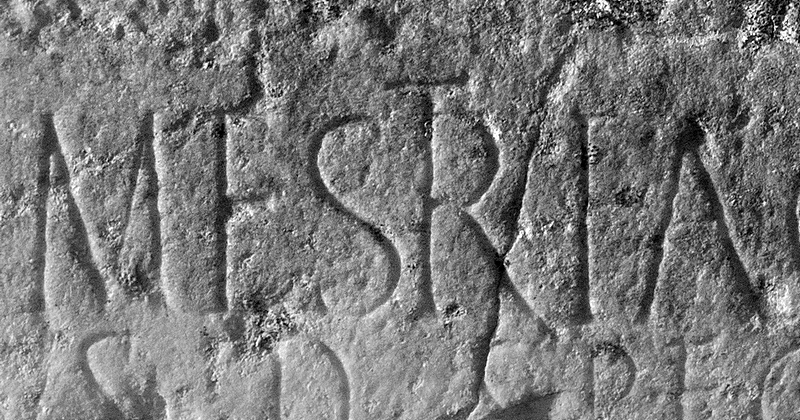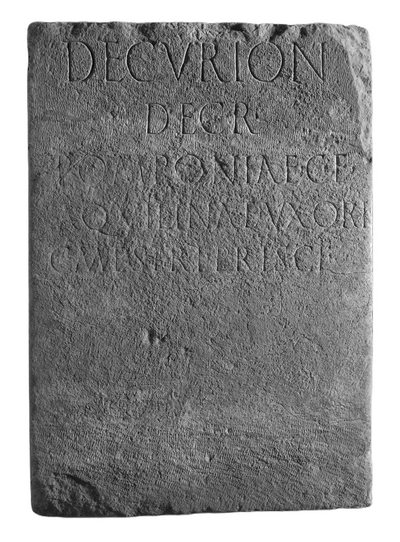Latin inscriptions dated to the 1st c. AD testify to the presence of three generations of the Mestrii family at the roman colony of Dion. Two women, Pomponia Aquilina and her daughter Mestria Aquilina, are included among the persons mentioned in these inscriptions.
Pomponia Aquilina was honored by decree of the local government (curia) with the erection of a monument, perhaps a statue, in a public space. The reason for honoring Pomponia Aquilina is not known. There is a possibility that it is due to gratitude for her beneficence towards the colony. However, in Roman times public honors granted to a woman were associated with the power and prestige of her family and reflected on her male relatives.
Since women had no formal role in public life, the social status of Pomponia Aquilina was defined by the men in her life. The epigraphic testimonies reveal the prominent position of her family in the elite of the colony. A lost inscription mentions her as the daughter of Gaius Pomponius Aquila, a successful centurion of the legion IV Scythica, who, after his retirement from the army, settled down at Dion.
Pomponia Aquilina got married to Gaius Mestrius Priscus and gave birth to four children, who, growing up, assumed the highest offices in the colony and funded public buildings, among them a praetorium providing accommodation for official travelers. Two building inscriptions mention her daughter Mestria Aquilina as benefactress of the colony along with her three brothers.
Like her mother, Mestria Aquilina is remembered through public sphere. As was usually the case for local elites, she contributed to the prestige of the Mestrii family by assuming a religious office as priestess of Miverva. The importance of the specific office is explained by the significant role of Minerva as the protective deity of the city of Dion during the Imperial times.
Bibliography
Heuzey L., Mission archéologique de Macédoine, Paris 1876, 269 -270 (nos. 110, 111).
Οικονόμος Γ., Επιγραφαί της Μακεδονίας, Αθήναι 1915, 34 (αρ. 55).
Plassart A., «Inscriptions de Piérie, d’Emathie et de Bottiée», BCH 47 (1923), 165.
Παντερμαλής Δ., «Δίον 2000», ΑΕΜΘ 14 (2000), 377-381.



